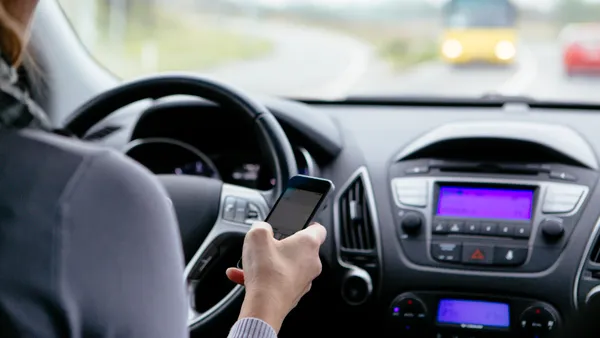Dive Brief:
- Automated vehicles (AVs) could soon be able to see around corners thanks to technology being developed by researchers at Stanford University. AVs would be outfitted with extremely sensitive laser technology that reflects off nearby objects, helping the car see around a corner.
- The Guardian reports the researchers pointed both a laser and a detector at the same point on a wall, whereas usually the detector is placed somewhere else. Signals that bounced back directly were removed, while the remainder were processed using an algorithm to construct the shape of the object around the corner.
- The research was published in Nature earlier this month and is set for further refinement. "This is a big step forward for our field that will hopefully benefit all of us," Gordon Wetzstein, assistant professor of electrical engineering and senior author of the paper, said in a statement. "In the future, we want to make [the technology] even more practical in the 'wild.'"
Dive Insight:
As discussions continue around the safety of AVs, developing their ability to anticipate unexpected issues is one area of needed growth. Human drivers would most often have the reaction time to brake for a child or dog that bolts into the road, and this could help improve the reaction times of AVs in the anticipation of any number of real-world problems.
TechCrunch notes, however, the technology is very different from the existing Light Detection and Ranging (LIDAR) mapping tools, which can take a long time to build an image with their high-speed laser scanners. "A substantial challenge in non-line-of-sight imaging is figuring out an efficient way to recover the 3-D structure of the hidden object from the noisy measurements," David Lindell, a graduate student in the Stanford Computational Imaging Lab and a co-author of the paper, said in a statement. "I think the big impact of this method is how computationally efficient it is."
A Gallup poll last month found 54% of Americans are "unlikely" to use AVs, with 59% of adults uncomfortable at the thought of riding in a fully self-driving car on a daily basis, and 62% uncomfortable sharing the road with fully self-driving trucks. Perhaps this safety advance would help bring those numbers down, especially as the number of AVs is set to increase in the coming years.
"It sounds like magic but the idea of non-line-of-sight imaging is actually feasible," Wetzstein said. And while there is plenty of work to be done to ensure that the technology works efficiently enough to be successful, it could make the prospect of riding an AV in a city more appealing if it is able to react to those unforeseen circumstances that occur in an urban environment.











